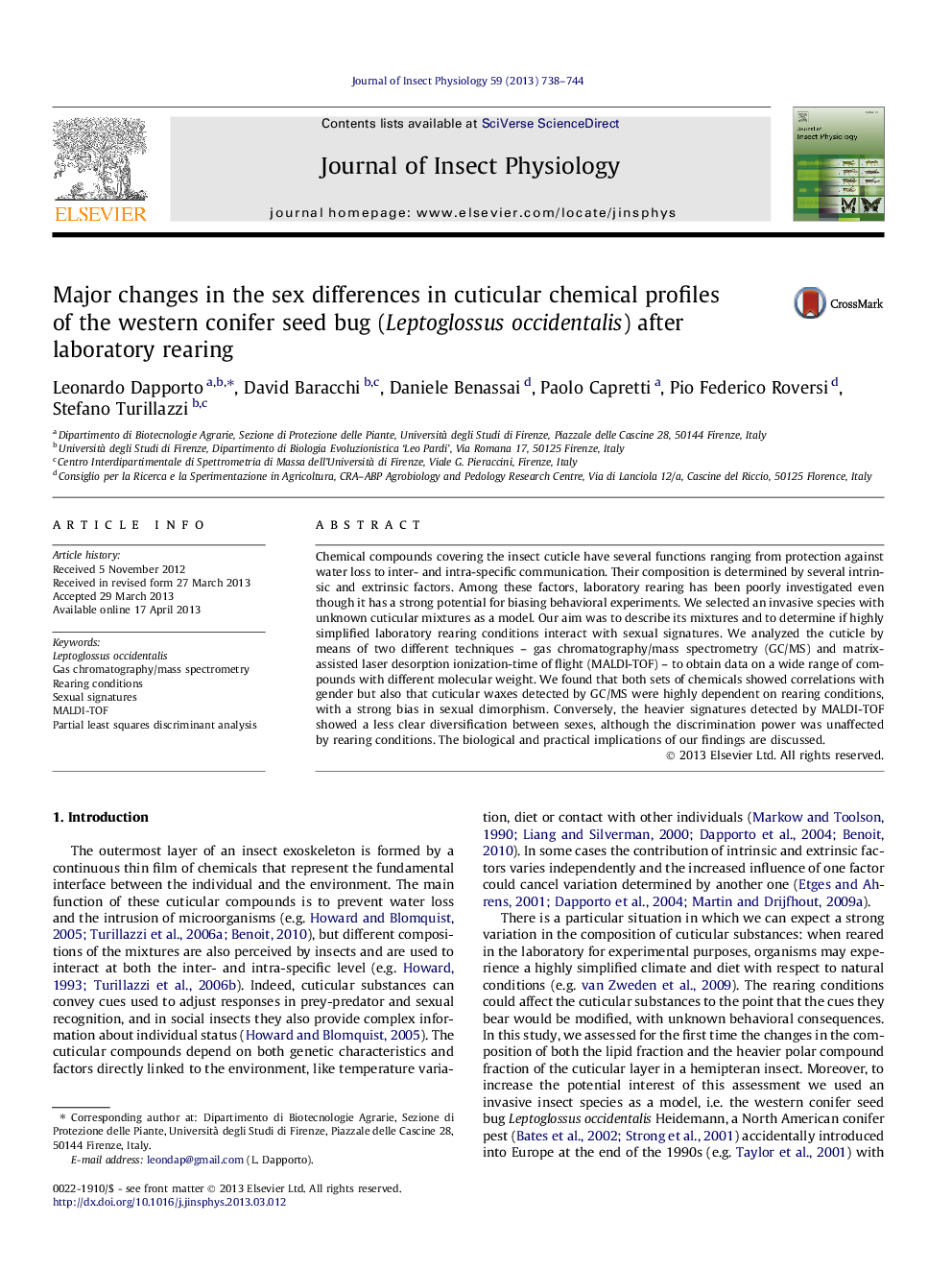| Article ID | Journal | Published Year | Pages | File Type |
|---|---|---|---|---|
| 2840593 | Journal of Insect Physiology | 2013 | 7 Pages |
•We describe the cuticular mixtures of Leptoglossus occidentalis.•GC/MS and MALDI-TOF were used to detect a wide range of compounds.•Males and females showed differences in both series of chemicals.•Laboratory rearing tended to diminish the sex differences in cuticular lipids.•We discuss implications for laboratory rearing of invasive species.
Chemical compounds covering the insect cuticle have several functions ranging from protection against water loss to inter- and intra-specific communication. Their composition is determined by several intrinsic and extrinsic factors. Among these factors, laboratory rearing has been poorly investigated even though it has a strong potential for biasing behavioral experiments. We selected an invasive species with unknown cuticular mixtures as a model. Our aim was to describe its mixtures and to determine if highly simplified laboratory rearing conditions interact with sexual signatures. We analyzed the cuticle by means of two different techniques – gas chromatography/mass spectrometry (GC/MS) and matrix-assisted laser desorption ionization-time of flight (MALDI-TOF) – to obtain data on a wide range of compounds with different molecular weight. We found that both sets of chemicals showed correlations with gender but also that cuticular waxes detected by GC/MS were highly dependent on rearing conditions, with a strong bias in sexual dimorphism. Conversely, the heavier signatures detected by MALDI-TOF showed a less clear diversification between sexes, although the discrimination power was unaffected by rearing conditions. The biological and practical implications of our findings are discussed.
Graphical abstractFigure optionsDownload full-size imageDownload as PowerPoint slide
